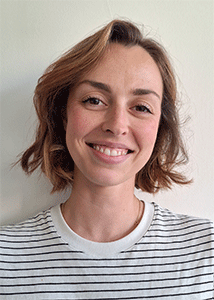Microscopy and macroscopy
Upright microscope equipped for observation in bright light, dark field, phase contrast, differential interference contrast, epifluorescence. The Axioskop 2 allows observations to be made at the tissue and cellular scale prior or not to analysis at the cellular scale using a confocal microscope.
Equipment
- HAL 100 halogen lamp for observation in bright light and HBO 100 with HBO 103 W/2 mercury vapor lamp for fluorescence application.
- Objectives 1.25x, 2.5x, 10x, 20x, 40x (air) and 63x (oil immersion objective).
- Filters: The microscope is equipped for fluorescence in reflected light (epifluorescence). The filtered excitation beam is reflected by a dichroic mirror and then focused on the preparation by the objective. The preparation absorbs shortwave rays and emits fluorescent radiation which is in turn captured by the objective and transmitted by the dichroic mirror. They then pass through a stopping filter which only lets through the long wave rays then transmitted to the observer. Green emission (FITC, Alexa 488…): EX 470/40 nm, EM 525/50 nm Red emission (rhodamine, Alexa 555…): EX 546/12 nm, EM 575-640 nm Blue emission (DAPI, Hoechst…): EX 365 nm, EM 445-50 nm
- Acquisition: Zeiss Axiocam MRc camera (color), Zeiss AxioVision 3.0 software.
Applications
Histology, immunohistochemistry, immunohistofluorescence.
Upright microscope equipped for observation in bright light and epifluorescence.
Equipment
- HAL 100 halogen lamp (bright light) and HBO 100 luminaire (fluorescence).
- 2.5x, 10x, 20x, 40x (air) and 100x (oil immersion objective). Filters: blue (DAPI, Hoechst…): EX 365 nm, EM 445-50 nm; Cyan: EX 435/20nm, EM 480/30nm; green (FITC, Alexa 488…): EX 470/40 nm, EM 525/50 nm; red (rhodamine, Alexa 555…): EX 546/12 nm, EM 575-640 nm; ultra-red: EX 645nm, EM 665nm
- Acquisition: Hamamatsu NB Orca Flash LT Plus camera, Zen acquisition software (Zeiss)
Applications
Histology, immunohistochemistry, immunohistofluorescence, multiple views, mosaics, image superposition, two-dimensional reconstruction, stereology.
Upright microscope equipped for observation in bright light and epifluorescence.
Equipment
- White LED lamp pE-300 Lite.
- 2.5x, 5x, 10x, 20x, 40x, 40x (oil immersion) and 63x (oil immersion) objectives.
- Filters: blue (DAPI, Hoechst): EX 360/40, EM 460/50; green (FITC, Alexa 488): Ex BP 480/40 Em BP 527/30; orange (TRITC): Ex BP 530-555 Em BP 595/25; red (Alexa 594): Ex BP 515-560 Em LP 590; far red (Alexa 647): Ex BP 620/60 Em BP 700/75
- Acquisition: Tucsen FL-20 BW camera, Mosaic 2.3 Tucsen acquisition software.
Applications
Histology, immunohistochemistry, immunofluorescence.
The macroscope is a specialized photomicroscope, suitable for photography in reflected light. It avoids the photographic aberrations associated with stereomicroscopes whose external appearance is similar.
Equipment
- Halogen lamp HBO 103 W/2
- Apozoom lens 1:6 x5.8 to x30
- Filters: red (Cy3…): EX 550 nm, EM 570 nm; green (Alexa 488…): EX 488 nm, EM 520 nm.
- Acquisition: Leica DFC camera, FW4000 V1.2.1 software.
Applications
Shooting of macroscopic objects (whole brains, large sections, etc.).
Technical manager : Anne-Marie Haeberlé, IE CNRS
03 88 45 66 37
haeberle@inci-cnrs.unistra.fr
The AXIOSKOP 2, AXIOIMAGER M2 and MACROSCOPE Microscope devices constitute a technical Photonic Microscopy platform open to statutory and non-statutory members of the INCI. Their maintenance is financed by INCI. Their access is subject to prior reservation on the Institute’s website. Access is not authorized on public holidays and outside the Institute’s opening hours. Any first use requires nominative authorization after verification of the user’s abilities and training in use. No user training can be provided for this purpose by anyone other than the responsible personnel without consultation.
All use must be recorded (date, duration and user name) in the notebook associated with each microscope. The settings of the microscope (filters, diaphragms, objectives, stage) and software used must be returned to standard positions after each use. Also, the protective cover must be placed back on the microscope after switching it off. No file can remain saved on the microscope driver for more than a week. No personal objects, histological slides, documents, products, waste, etc. must be left on site. Any “abandoned” or “forgotten” file or material will be destroyed after the regulatory deadline.
Any violator of these simple provisions will be refused access to the microscopes.







